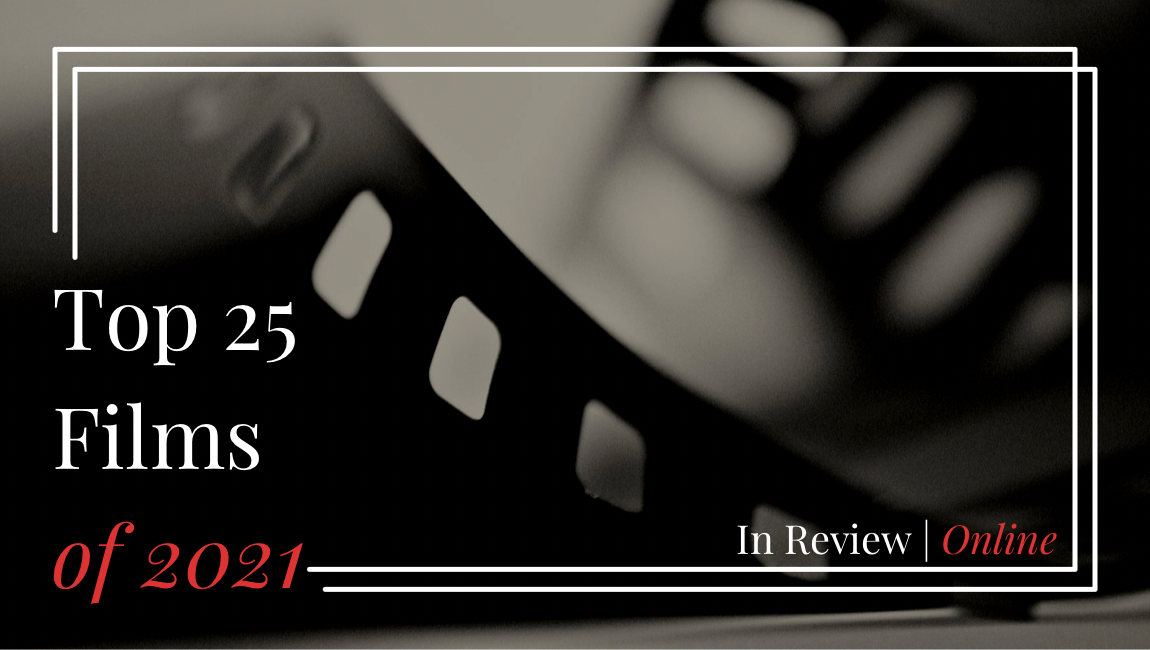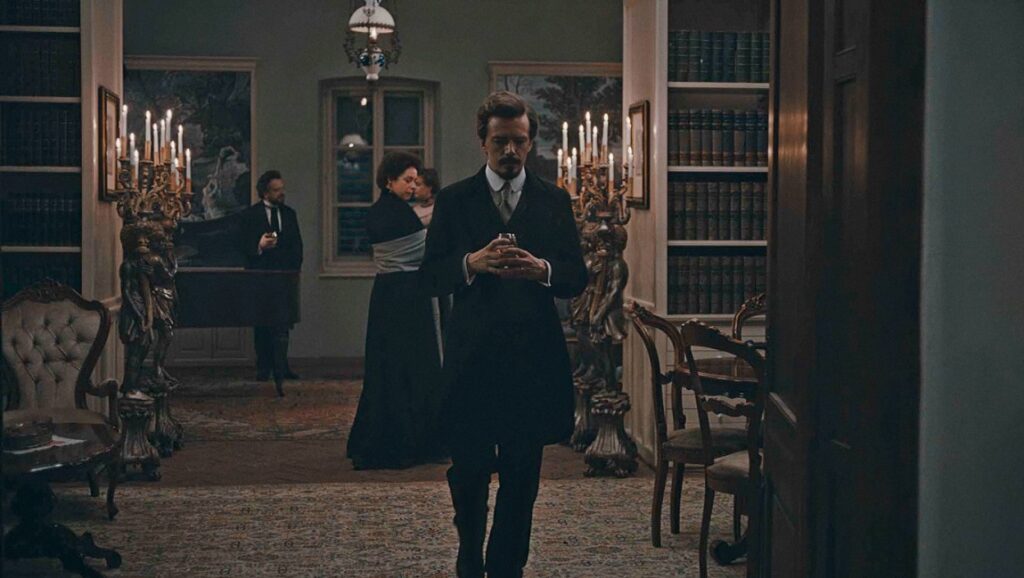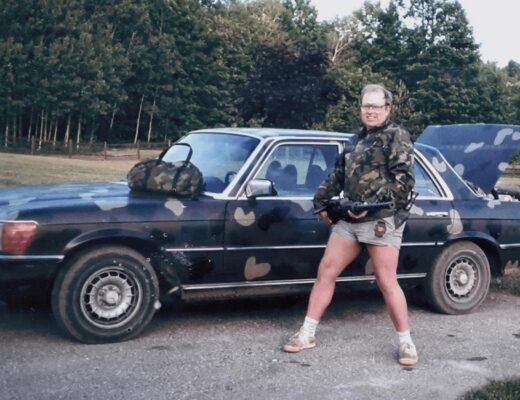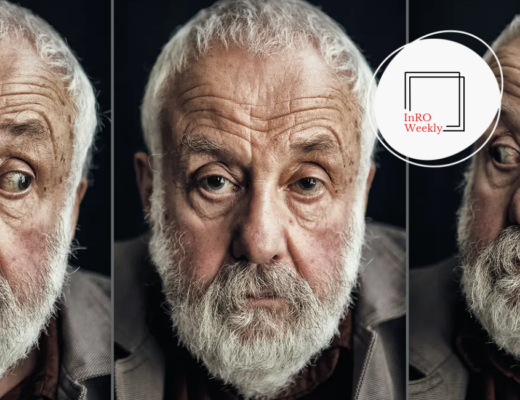Our favorite film of 2021 looms near, but we’re not quite there yet. Today, we’re talking picks 6-10, which is probably the most Hollywood-heavy section in our Top 25 — Spielberg, Shyamalan, Cage! All films, even if we previously covered them, have been revisited with new words and new writers. Check back tomorrow for the culmination of our countdown: #5-1, and keep up with our full Best Films coverage (including our Honorable Mentions) all week long.
10. Pig
You could be forgiven for suspecting that a movie starring Nicolas Cage as a reclusive, world-renowned chef searching for his kidnaped, beloved truffle-hunting pig through a nightmarish, pulpy Portland, Oregon restaurant scene would be a vaguely campy revenge picture, stuffed with cartoonish gunfights and ridiculous dialogue, the kind of thing that goes straight to streaming and winds up another throwaway in Cage’s ongoing meme-ification. Instead, first-time director Michael Sarnoski’s Pig is in fact a meditative, haunting, and heartbreaking tragedy. It subverts those cornball revenge movie expectations to become a rumination on the tangle and mystery of loss, a story about finding and holding on to some sort of meaning in a meaningless world.
Though it’s not without its affectations. Pig’s depiction of a sort-of-gangster, underground culinary scene, complete with kidnappers, wait-staff fight clubs, and shadowy kingpins, would be right at home in the goofy John Wick version of this story, as would the brutal but not particularly graphic violence. But they’re all highlights to enhance the flavor of the main course, the sort of inscrutable details that, paired with the film’s funereal tone, make its made-up world seem that much richer and, for its protagonist, that much more of a place of emptiness and shallowness, a place that allows you to be beaten down, abandoned, unable to cope.
And it’s possible that Cage has never been better. Even in beloved genre work of late like Panos Cosmatos’ Mandy or Sion Sono’s oppressively bonkers Prisoners of the Ghostland, the expectation (maybe even demand) of the story is that Cage go nuts, to enter his now-patented “mega-acting” mode, seemingly the only thing the audience appreciates about him anymore. But he’s always been supremely dedicated to his idiosyncratic craft. There’s a monologue near the end of this that, as written, is as Cage-y a piece of histrionics as one could ask for, but he delivers it — through his blood-soaked beard — in such subdued form that he seems to bring it up and out of himself from such an obviously true place of loss and pain. It demolishes every expectation of a modern-day Cage performance, and fixes Pig as one of the year’s most truly surprising and singular films. Matt Lynch
9. Malmkrog
Cristi Puiu’s fifth fiction feature, Malmkrog, represents a further entrenchment in the oeuvre of perhaps the Romanian New Wave’s most dedicated portrayer of claustrophobic incidents and the web of personal interactions that can result in such confined spaces and at such long durations. Malmkrog represents something of an extreme in both regards: his first period film, it is set entirely in a luxurious, secluded manor in fin de siècle Transylvania and runs a full three hours and twenty minutes. These further extended stretches of time also contain little of the life-and-death drama of The Death of Mr. Lazarescu, the methodical killings of Aurora, or the deft family interplay of Sieranevada. Instead, Malmkrog confines itself almost exclusively to the philosophical, ethical, and ecumenical debates of five aristocrats, which principally cover those two inevitably intertwined constants in any empire: war and religion. But far from an arid exercise — ironic, considering the film’s foundations in Puiu’s prior staging of excerpts from Vladimir Solovyov’s novel War, Progress, and the End of History: Three Conversations, Including a Short Story of the Anti-Christ at an acting workshop in Toulouse that was later compiled into his Three Interpretation Exercises (2013) — Malmkrog emerges as uniquely cinematic, as much in Puiu’s sense for blocking and motion as in the words and tone that are adopted over the vast bulk of 200 minutes. Split into six discrete segments, the film is careful to ensure a continuity of rigor and playfulness while varying its approach: the first segment is taken up mostly by a 44-minute long-take, which vacillates between static, stately frames and sudden pivots to catch the change in positions of each participant in the conversation, while two of the other segments are shot in individual close-ups as the speakers sit at a dinner table, cutting constantly with a marked literalism.
Yet despite the potential realism of what is being depicted, save for a few spectral images and one tremendously disorienting rupture, the film’s affect lies somewhere in between. The plain absurdity of the situation, which draws dinner guests into meals that they sit down for but barely touch, instead preferring to prattle on for hours, only grows as the night draws on, and yet it would totally overstate the situation to say that Puiu mostly uses these words as a means to lampoon the self-importance of the rich. The looming world wars are but the most obvious lenses upon which to view the relevance of these extended conversations, and it is apparent from Puiu’s watchful gaze that he finds something inherently fascinating about, say, the way the host reads from the Gospel According to Luke in order to refute one of the guests’ assertions; in many ways, this is one of the great recent films about religion and the particular ways in which believers interact with each other. And there is just as much care paid to certain details, like the interplay between the aristocrats and their servants — the second chapter is dedicated to the lead servant — or the choice of language: despite the Romanian setting, most of the film is conducted in French, the de facto language of the aristocrats at the time. Such signifiers pile up over time, and yet Malmkrog remains an immediate, bracing experience from the get-go, so monomaniacally focused is it upon the pleasures and pain of verbal one-upmanship and discourse. Puiu’s graceful direction remains consistent as an essential ballast, and the purposeful irresolution at the close only feels fitting for the existence of those in perpetual suspension, cloistered and secure in their ideologies. Ryan Swen
8. Old
Perhaps the most memed film of the year (give or take Annette), M. Night Shyamalan’s Old challenged and beguiled audiences in equal measure, becoming one of the first significant post-lockdown box office successes despite the social media scoffing. Of course, this isn’t anything new for Shyamalan, now 14 features and three decades deep into a filmmaking legacy that has seen him go from celebrated Oscar contender to scorned blockbuster technician to essential Blumhouse collaborator — without ever losing his distinctive authorial voice. Coming off some notable financial and critical wins, in part thanks to the backing of Jason Blum, Old finds the 51-year-old director back at a major studio (Universal, which has distributed those last few) and working with a comfortable mid-range budget, creating cinema as vibrant and provocative as what he was making 20+ years ago.
One of the more straightforward premises Shyamalan has worked from, Old plays out in seclusion amongst a group of strangers who, acting on a mysterious invitation to a remote tropical getaway, soon find themselves abandoned and unable to leave a sinister beach that is encouraging their bodies to age at an alarmingly accelerated rate. A rather brilliant, universally recognizable conceit, Shyamalan and current go-to cinematographer Mike Gioulakis conceive images worthy of this imaginatively nasty fable which they capture on a beautiful, soft 35mm stock that favors a spectacular natural setting that backdrops the human violence. Offering its fair share of grisly thrills, Old is, nevertheless, at its most disturbing when the script steers into the existentially dreadful nature of its protagonists’ suddenly compressed lives, deftly written to reflect and magnify the viewer’s anxieties around losing time while also reminding the audience of their inability to meaningfully perceive it. That this manages to then loop into a larger condemnation of western pharma criminality is remarkable, even more so that it is accomplished convincingly and recomplicates the fraught confrontation between film and audience already at play. But while Old isn’t shy about confronting us with the most pointed of human insecurities, Shyamalan has never been a cynical filmmaker, nor one who pursues an abrasive relationship with his audience, and this film proves no different, following a zippy pop editing rhythm that leaves room for poignant pauses. Traversing a varied emotional spectrum, though ultimately more melancholy than anything else, Old is an all too rare modern Hollywood marvel, eager to confront life’s most dread-inducing questions from a place of hope and romanticism. M.G. Mailloux
7. West Side Story
Perhaps one of the greatest movie miracles Steven Spielberg has ever pulled off is in overcoming the Ansel of it all in his remake of West Side Story. Anyone who has borne witness to the actor’s musical pursuits understands what a charisma black hole he is, and the legions who saw his Gumby-like athletic prowess in the Divergent series have ample cause to doubt his facility with such a choreography-laden production as a West Side Story remake. And yet, here we are, year’s end, Elgort’s contributions proving relatively flat and vacant next to his co-stars, but not damningly so, and West Side Story has settled in as one of 2021’s best films.
Of course, mitigating the lead actor’s wack factor isn’t the why of the film’s success, only the first cleared hurdle, and indeed Tony Kushner proves Spielberg’s most essential ally in justifying the existence of this remake. The playwright/screenwriter’s apparent operating procedure in approaching the material is to presume subtext where text already existed — it’s not as if there was much nuance to the original — and so has helped construct this West Side Story as a kind of supertext. It’s hardly subtle — appropriate, perhaps, for a musical conceived as Capulets and Montagues, but with racism — but it works here to speak to a more specific, resonant cultural psychology (never more apt than it feels in 2021; it’s no accident Spielberg chose to make this film now). In this West Side Story, street wars are waged over disappearing turf, bulldozed by gentrification and capital, stamped with a weeks-away expiration date; and yet tribalism, for these young men, is both self and security, more important than the promise of a tomorrow that offers only further disintegration of the myth in their minds. Elsewhere, as Maria, Rachel Zegler wonderfully mingles youthful naivete with stubborn determination, playing her as a young woman contending with a toxic cocktail of external influences, and clarifying her character beyond the simplicity of her Shakespearean origination. Even in the film’s archest flourishes, there exists this commitment to an expanded, if heightened, realism: in making would-be gang-rapists of the Jets when Anita comes to deliver Maria’s message to Tony, Kushner gifts Anita’s actions with some semblance of psychological legibility, rather than leaving them as the mere inevitability of tragedy. (In other words, as InRO staff writer Patrick Preziosi previously put it, “it truly feels as if life exists beyond the music.”)
Of course, none of this works without Spielberg, and he here seems as supercharged as he has in ages. West Side Story features some of the best images of his recent career — though this is admittedly easy to accomplish when working with DP Janusz Kamiński — from a scene of Tony standing in a puddle, its reflected lights shimmering like a halo around him, to the film’s love-at-first-sight moment, the pair frozen on a gym floor, parted by a blur of bodies in dance, lens flares flitting across the image like intimations of magic. These moments are met by less sexy but no less masterful tracking and crane shots, Spielberg often shooting the film’s streets as if they were the bombed-out ruins of a war-ravaged city (this when they aren’t alive with bold colors swirling in impromptu dance), as well as more brutal viscerality — the film’s first rumble promises this isn’t Wise’s West Side Story. It’s this dichotomy, then, that speaks to 2021’s West Side Story’s greatest strength and raison d’etre: Spielberg deromanticizes his version not to eliminate romance — in its most expansive sense — but to draw attention to it, to enunciate its artifice, place it within reality, and show its necessity in navigating a tragic, toxic world. In allowing it to here shine through the cracks of a rotting foundation, West Side Story has never seemed more romantic. Luke Gorham
6. Wheel of Fortune and Fantasy
Visual rhymes preside over the three, tenuously interlinked sections of Ryusuke Hamaguchi’s Wheel of Fortune and Fantasy, drawing parallels across earthbound stories that have the astonishing ability to seamlessly recalibrate themselves at even just the most passing admission or casual reveal. Ex-lovers fall into the arms of trusted best friends, mistaken identities are realized only after a remarkable candor of intimacy is achieved, sex and responsibility are distorted, then, made painfully clear. The title is instructive of how we’re supposed to accept pinholes of narrative as the rightfully sideswiping shifts of drama they really are, random instances of fortune and fantasy constantly internalized and externalized, and the surface terrain remains unchanged. Wheel of Fortune and Fantasy is — among its many virtues — an act of directorial faith in the audience, offering up varying objective viewpoints of contemporary relationships (with just a touch of sci-fi…), while managing to maintain subjective, emotional anchors, as embodied by his performers.
The film’s subtly mimicked structuring lends an unspoken method of sequencing to these vignettes: suddenly breaking from a shot/reverse shot rhythm to shoot an actor’s face straight on; a Hong-esque (i.e., endearingly clumsy) zoom; a time jump, which the last story mimics within its very conceit, as opposed to the hitherto norm of dropping in a title card denoting the temporal specifics. Lastly, most of the prolonged conversations that comprise the film are often exclusively held between only two parties. Hamaguchi is rigorous in this way, but he doesn’t sacrifice universality or fine-tuned emotionality for the sake of his formal daring. He’s a pop filmmaker who prefers hard edges, a reading also applicable to the sexual frankness and honesty toward desire threaded throughout, which are in turn often delivered within uncompromising long takes. His filmmaking grammar is a perpetual give-and-take between pop and experimentation, which, among other things, and fitting in a year where his Drive My Car was also released, explains his burgeoning, nigh-impossible range. Patrick Preziosi












